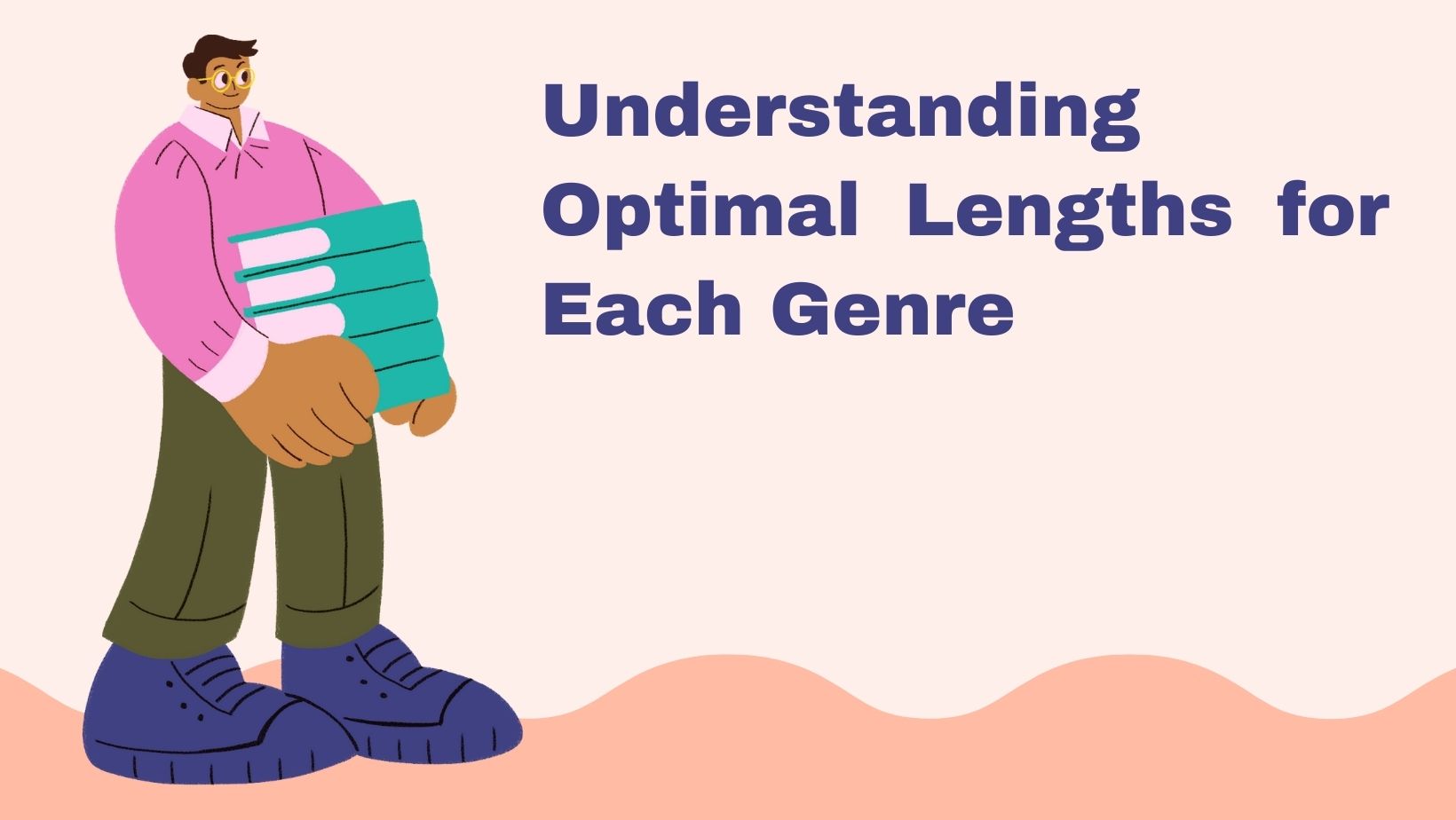In the flourishing landscape of self-publishing, Amazon Kindle Direct Publishing (KDP) has emerged as a prominent platform for authors worldwide. However, understanding the platform’s various guidelines and requirements, particularly those related to KDP word count, file sizes, and pages, is crucial to achieving a smooth and successful publication process.
This article aims to shed light on these parameters, helping authors to fully comprehend and navigate these limitations. Finding definitive information about the minimum and maximum KDP word count for Kindle ebooks in KDP can be challenging. Navigating through Kindle Direct Publishing (KDP) Help can be difficult, especially for new self-publishing authors.
The limitations can significantly streamline your journey, ensuring a seamless transition from a manuscript on your computer screen to a tangible, printed book in your hands. Information regarding maximum file sizes or page numbers for print books is not easily accessible either. To save you time and frustration, I have conducted research to provide you with answers.
However, to ensure a smooth publishing process and create an eBook that resonates with readers, it’s crucial to understand the parameters of KDP word count, file sizes, and pages. This article is dedicated to helping to aspire authors understand these limitations to take full advantage of the KDP platform.
Table of Contents
Is There a Length Limit for Publishing Books on Amazon KDP?

Yes, there are limitations on the number of pages in printed books. The minimum page requirement is 24 pages, while the maximum is 828 pages. However, when it comes to ebooks, the answer is not as straightforward.
One aspect that is generally accepted is that imposes a minimum KDP word count for Kindle ebooks. In 2013, Amazon KDP confirmed the removal of titles with less than 2,500 words. Although this information is no longer available in KDP Help, it was documented in an email sent to a self-publishing author.
The only reference to short ebooks on KDP Help now pertains to disappointing content. Similar to many guidelines on KDP Help, finding definitive information can be challenging. The beauty of KDP is its flexibility and inclusivity, welcoming a wide range of works, from concise novellas to comprehensive epic tales.
As such, Amazon KDP word count for a book does not explicitly dictate a minimum or maximum. However, the general rule of thumb for most genres is that a full-length novel is typically around 70,000 to 100,000 words. On the shorter end, novelettes and novellas can range from 7,500 to 40,000 words. Remember, it’s the content quality that matters most.
Let’s now delve into the limitations of each book format in more detail.
Limitations for Print Books
The first limitation pertains to the size of the PDF file. While KDP does not provide a warning about the interior file size for print books, it does mention the following for book cover files: Cover files larger than 650 MB will not convert, and it is recommended to keep the file size at 40 MB or less to avoid printing delays.
Regarding page count, there is no specific word count limit for KDP print books. However, there are restrictions on the number of pages. The table provided above indicates a minimum requirement of 24 pages. The maximum number of pages varies depending on the chosen print book format, with limits set at 828, 776, or 600 pages. Estimating the KDP word count based on pages can be challenging, but you can utilize a calculator to provide a rough estimation.
For instance, a book of 100,000 words using 13-pt Times New Roman font would result in approximately 292 pages, while the same book using Verdana 14-pt font would yield around 341 pages. Overall, the limitations for print books on KDP are generally generous, and most authors, particularly low-content book publishers, should not encounter any issues.
Understanding these limitations for print books is integral to successfully navigating the self-publishing process. By doing so, you can strategically plan your book project to ensure it aligns with these parameters, ultimately leading to a more efficient publication process and a finished product that meets both your vision and your readers’ expectations.
Interior and Cover Formatting
Another key limitation revolves around the interior and cover formatting of your book. The quality of your book’s layout can drastically influence a reader’s experience, and there are detailed formatting guidelines you need to adhere to.
For instance, self-publishing platforms typically have specific requirements for margins, headers, footers, page numbers, and fonts. The cover of your book, both front and back, should meet the platform’s guidelines for image resolution, spine width, and barcode placement. An improperly formatted book can deter potential readers and lead to unnecessary complications during the publishing process.
Paper Type and Color
The paper type and color are another set of limitations that self-publishers face. Platforms like Amazon KDP offer options of white or cream paper for black and white interior books. However, for color interior books, only white paper is available. Moreover, the paper’s weight, or thickness, is pre-defined and may vary based on your chosen trim size and whether your book is black and white or color.
Limitations for Kindle Ebooks
Obtaining clear information on limitations for Kindle ebooks is more challenging than for print books. It required extensive research and exploration to find reliable and accurate data. The Wayback Machine was utilized to access a removed entry from KDP Help, revealing the maximum ebook file size of 650 MB. This file size limit seems to apply across all KDP publishing.
Further down the page, there is a note stating that KDP currently supports files up to 650 megabytes and 8,000 pages. Attempting to upload a file larger than this limit will result in a conversion failure. Amazon’s current help pages do not mention any page count limits for ebooks. However, it is recalled that a limit of 3,000 KENP (Kindle Edition Normalized Pages) was previously imposed due to Kindle Unlimited (KU) scams.
An old article from The Digital Reader confirms that KDP implemented a limit of 3,000 KENP pages, which is now noted in KDP Help: author earnings are determined based on their share of total pages read, up to a maximum of 3,000 pages per customer per title. This limitation does not imply that KDP restricts ebooks based on page count; it simply means that ebooks exceeding 3,000 pages will not earn Kindle Unlimited KENP royalties for additional pages beyond this limit.
Restrictions to Consider for Ebooks:

As mentioned earlier, there is an approximate minimum KDP word count of 2,500 words for KDP ebooks, even though KDP does not explicitly state this number. It is safe to assume that it serves as a good guideline. It is also reasonable to assume that the maximum page count is 8,000, but publishing a book of that length is uncommon.
The only definitive restriction is for ebooks enrolled in Kindle Unlimited, which should be less than 3,000 pages. However, if you do not enrol in KU and only intend to sell ebooks, there are no specific restrictions on KDP word count and page numbers unless you reach the limit of 8,000 pages.
One additional consideration is that the file size of your ebook can impact your royalty earnings. If your ebook contains embedded videos or numerous large images, you may incur significant Kindle download charges. For eBook formatting, the total number of pages is less of a concern, as eReaders adjust the page count based on the user’s preferred font size and type.
Summary
Amazon KDP offers great flexibility, understanding these limitations and guidelines is key to a successful publication journey. Whether you’re penning a succinct guide or an expansive novel, knowing the KDP word count expectations, file size limits, and page count standards can significantly streamline your self-publishing process and potentially maximize your royalties. Happy writing, and here’s to your success in the digital book world!
As with any online platform, information, and guidelines can change over time. Amazon KDP Help is no exception, with pages being regularly updated, relocated, or removed. However, based on the available information, several KDP limitations have remained relatively consistent for years:The maximum file size for upload on KDP is 650 MB for both print books and ebooks, likely due to system limitations.
Print books have a minimum requirement of 24 pages and a maximum limit of 828 pages. Ebooks have an estimated minimum KDP word count of 2,500, and there is no specific maximum KDP word count limit. Kindle Unlimited ebooks have a limit of 3,000 pages for royalty calculation purposes, but there are no explicit restrictions based on page count for ebooks sold outside of Kindle Unlimited.
For self-publishing authors working on text-only novels ranging from 40,000 to 120,000 words, these limitations should not pose any issues. However, when publishing books with numerous images, it is essential to resize and optimize the images to manage file size effectively. Attempting to upload excessively large files, such as an 850 MB ebook, would be impractical for any online system. Lastly, it is worth noting that the limitations discussed in this article likely apply to other online self-publishing platforms as well.



